Surviving the Winter with the World’s Southernmost Bird of Prey
Posted on in In the Field by Katie Harrington, Hawk Mountain Research Associate & Former Conservation Science Trainee
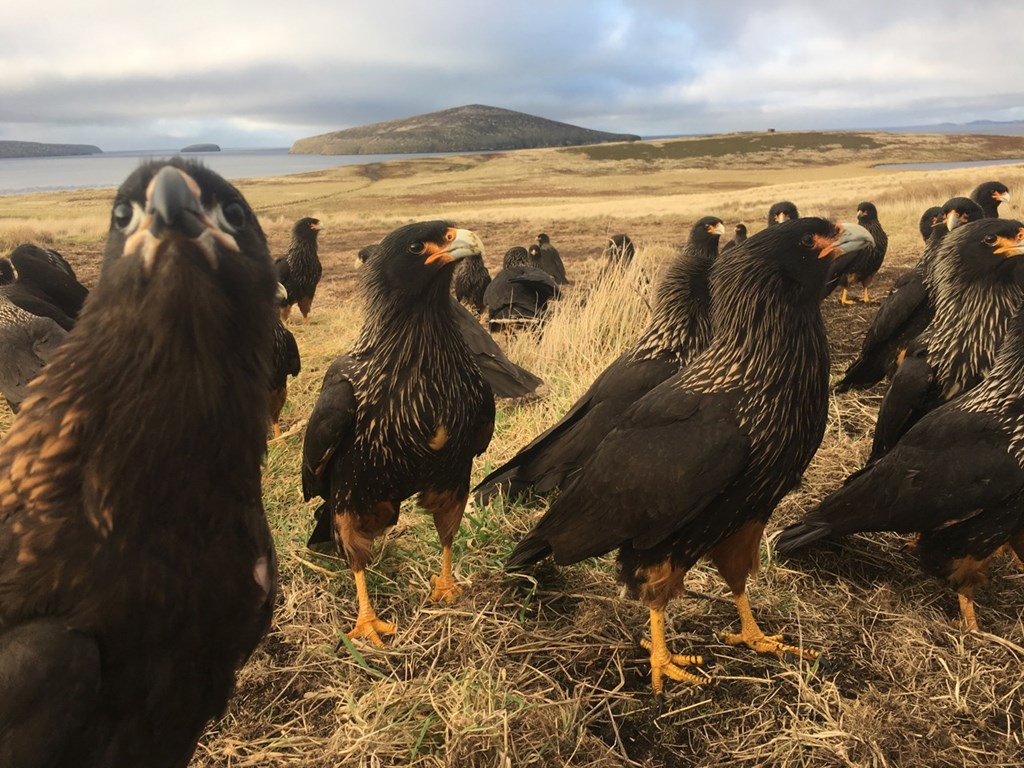
Winter is just around the corner for us here in North America, but for striated caracaras in the Falklands, things are just starting to heat up again. Spring nest cleaning has come and gone, and by now most adult “Johnny Rooks” (as they’re locally known) have begun a five-week period of sitting and waiting for their young to hatch.
We focused our research efforts this past August on New Island, in the southwest of the Falklands, which harbors the third largest breeding population of Johnny Rooks in the Falklands of more than 85 nests. It’s an island of special interest to us, because its Johnny Rooks have recovered from a history of persecution—when it first became a nature reserve in the 1970s, it had lost its breeding Johnny Rooks entirely. We wanted to find out how this remarkable bird made a comeback on the island, particularly during winter months when their primary prey, seabirds, are away at sea. From a conservation standpoint, we need to know what resources these birds need not only to survive, but to thrive, on an island recovering from the impacts of farming. So, while we settle into our winter up north, let’s take a minute to reflect on how Johnny Rooks’ spent theirs.
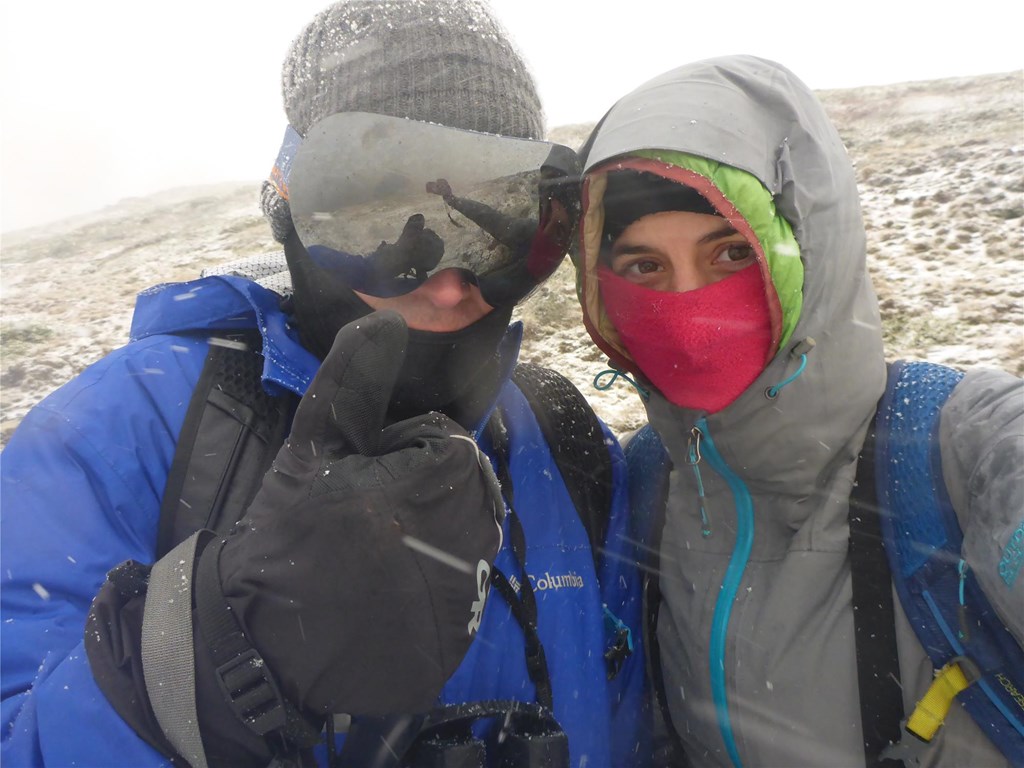
This season’s research team included me and Jonathan Meiburg. Between the two of us, we’ve spent over 57 weeks in the Falklands observing Johnny Rooks. I’d just wrapped up a master’s thesis, studying how young Johnny Rooks manage seasonal fluctuations in food availability, while Jonathan had just turned in the first draft of his upcoming book on the natural history of the world’s caracaras. Both of us were eager to head back into the field to spend a winter with the birds that have fascinated us for years. But we had to bundle up, which felt a bit strange in August. Squeezed into a slim window of daylight amid snow squalls and “end-of-the-world” wind storms, as described by one of New Island’s caretakers, we managed to complete a 55-mile walking survey of the island, deploy and retrieve 18 GPS data loggers, collect genetic and gut microbiome samples, and band an additional 29 birds for our long term population monitoring.
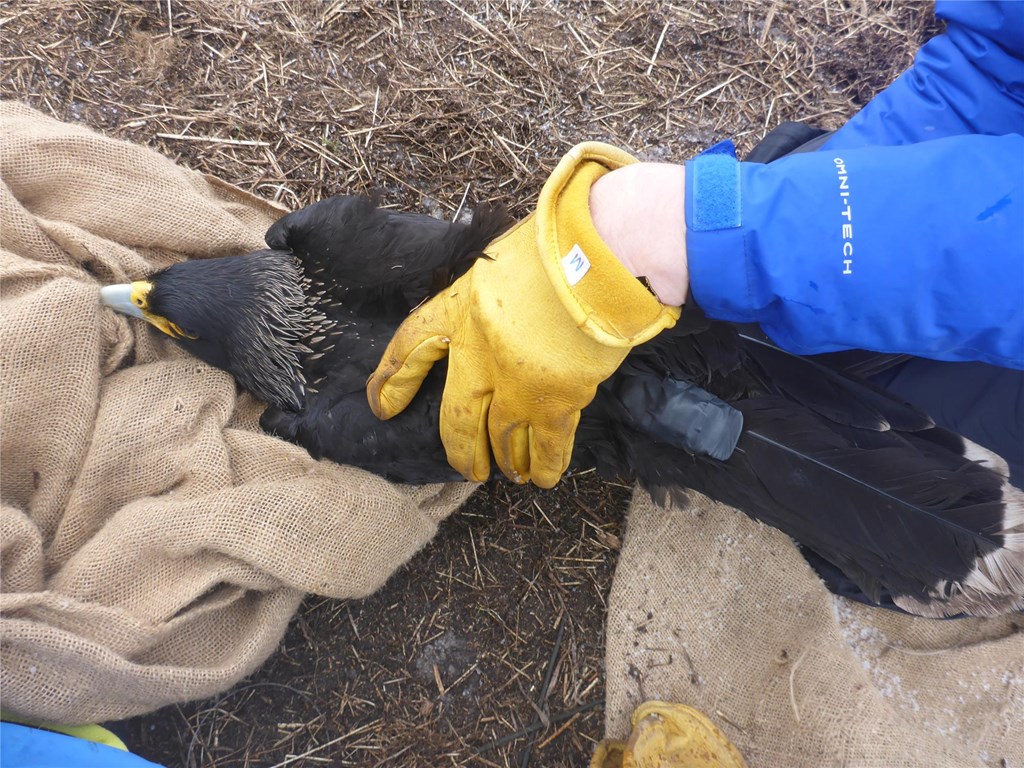
While it was grueling work, our effort—and the efforts of past Hawk Mountain field researchers—paid off. For the first time ever, we were able to follow previously banded breeding pairs from one season to the next. In the summer, territorial Johnny Rooks defend areas abundant in food resources, usually seabirds that are absent in the winter, so we were surprised to find them defending these same territories, even when their summer food sources were gone. It seems possible that they’re holding these territories because they know it’ll be advantageous when the seabirds return. In the meantime, they had switched to a different food source that we don’t usually associate with large birds of prey: earthworms and grass grubs.
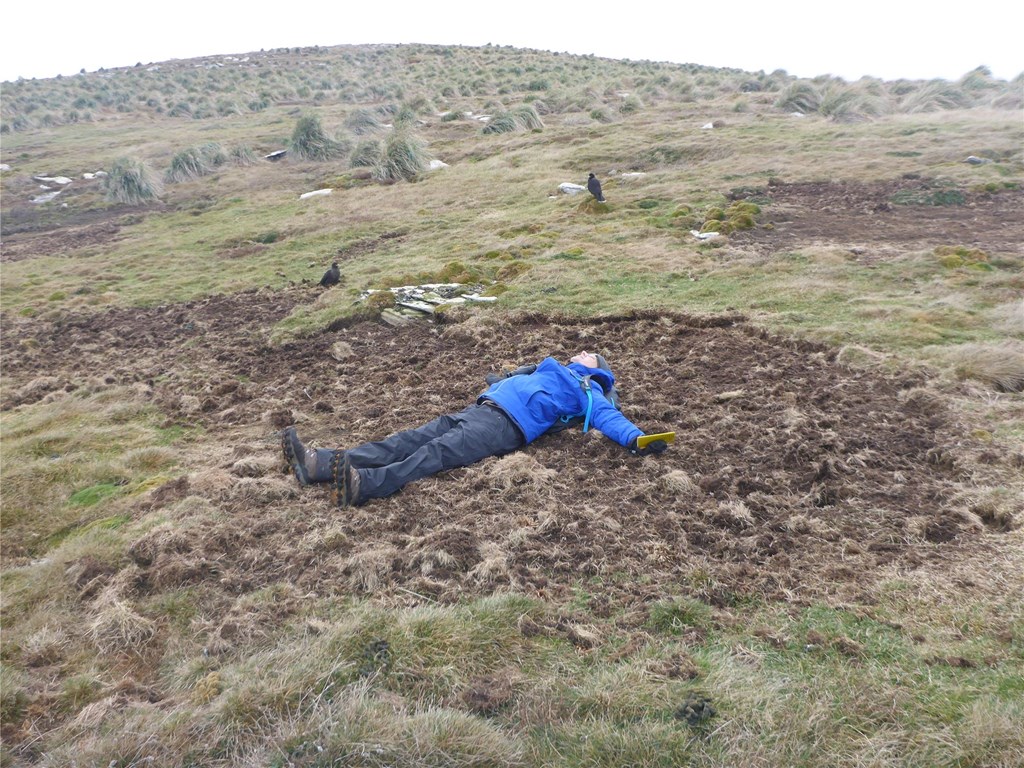
Of those we saw feeding, 80% were digging in the ground with their large talons, turning over football field-sized swaths of land in search of invertebrates, and they seemed to be finding them. As we trapped and banded birds, we weighed them to get an idea of body condition over time, and their winter weights were comparable to the preceding summer’s weights.
In a way, it’s not surprising that Johnny Rooks are so adept at finding and maximizing resources, or using their long, strong legs to access them. Their genus name Phalcoboenus means “walking falcon,” and their closest relatives in the Andes (the Mountain, Carunculated, and White Throated caracaras) are all known soil diggers. This behavior, however, hasn’t been widely reported for Johnny Rooks, and past observers have suggested that they rely primarily on the carrion and excrement associated with colonies of fur seals and gentoo penguins to get through winter. These do form a part of their diet, but at least on New Island, our research indicates invertebrates are critical for their success through winter.
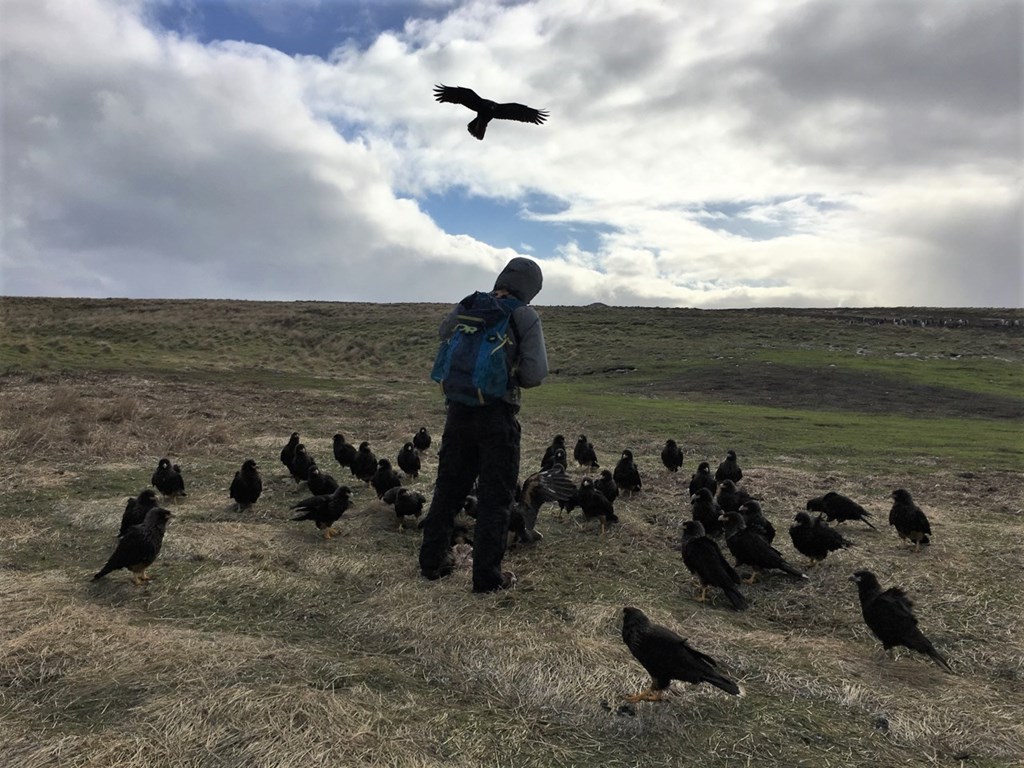
While we’re starting to cozy up in sweaters back in the States, the days are getting warmer and longer for the Johnny Rooks on the islands; the seabirds have returned, and a new lot of “ginger babies,” as a dear friend in the Falklands referred to them, are on their way. Fortunately, our friends in the Falklands are keeping an eye on the process for us, posting updates and photos through this exciting time of the year. The best places to follow along include the Johnny Rook Facebook page and the New Island Facebook page.
To support these efforts, please contact Hawk Mountain Director of Conservation Science Dr. Laurie Goodrich at [email protected].